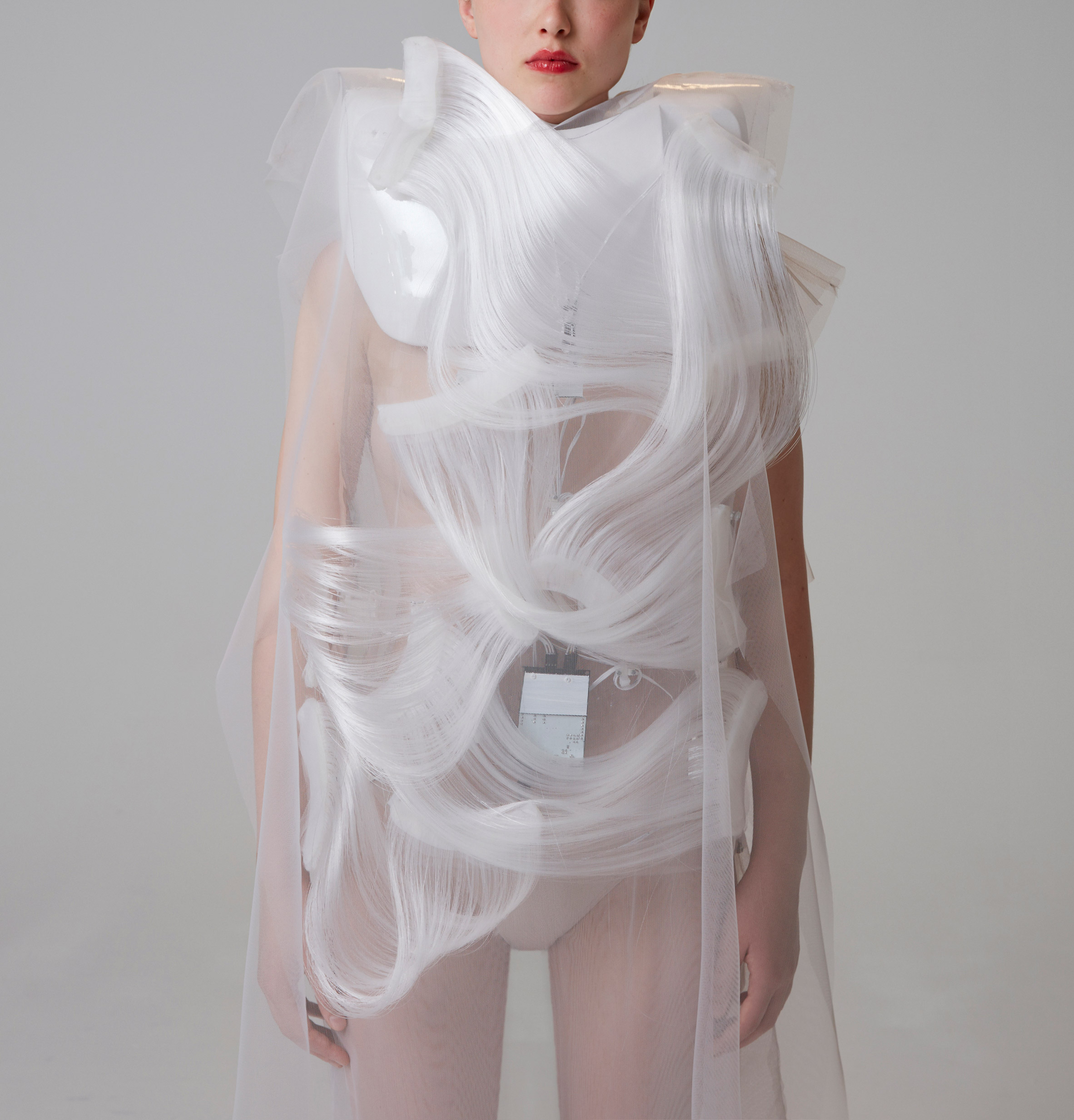Assignment: written proposal for a final project
Our final project will show that you’ve learned not only the basics of physical computing but that you can create an interactive art project showing off those abilities.
Scale
It should fit on half of the tables we use in A10. If you can make a case for doing a bigger project, we will try and make space. If you are doing a wearable project we’ll need to figure out how people can try it on or if you’ll just demonstrate it while wearing it.
Sound and light levels
Try to keep these low enough to not interfere with conversations or other projects. By the time of the show on Friday we will know enough that we can assign people to tables in a way that minimizes interference.
Project fundamentals
- physical computing, including inputs, outputs, and state machines
- form: how it looks and sounds is as important as how it works
- content: why does your project exist? who is it for? what can it do?
If you have any questions I have office hours from 1-4 on Friday. Jake and Sydney will post their hours in the next few days.
Dates
Week 11
Tue, 7 Nov: proposal review, lecture on multiplexers and library 101
Thu, 9 Nov: work day
Week 12
drop pass/fail
Tue, 14 Nov: lecture on problems discovered in week 11, work day
Thu, 16 Nov: work day
Week 13
Tue, 21, Nov: Rough draft/prototype crit, graded
Thu, 23 Nov: TURKEY DAY
Week 14
Tue, 28 Nov: work day
Thu, 30 Nov: work day
Week 15
Tue, 5 Dec: work day
Thu, 7 Dec: Projects DUE, grades will be based on this crit.
Fri, 8 Dec: Final show in Studio for Creative Inquiry, set up at noon, show starts at 1pm
Background research
- required reading: Tom Igoe’s post on physical computing projects. What Tom wrote a decade ago is still true today.
- NYU’s ITP shows are the inspiration for our final show in SCI. Remember this is work by graduate students, many of them could teach Phys Comp. What I like is the variety, the density, and how enthused they are about their work.
- why form matters — anyone in class could make this project using supplies in A10. What’s unique is that it’s made as a concept of a toy and has the correct visual and interaction languages of a toy
- look at another class’s projects for inspiration, not for performance quality
- obligatory Lady Gaga reference for the relationship between form related to content
Proposal Content
An outline for the proposal, add to it as much as you like. My examples are terse and don’t have any drawings or images, feel free to take a paragraph or two for each element of the outline. If you can’t draw, then use CAD or find images on the Interwebz to illustrate your ideas.
This isn’t about the details of how your project will be implemented, but the concept of what you want it to do and a rough plan for how you’ll work the next few weeks.
Abstract / concept statement
In a paragraph, describe the fundamentals of your entire project.
Example: An electronic piano with that teaches you to play songs on the piano using LEDs, piano keys, and speakers. The LEDs are assigned to keys, when an LED lights up you press the key and hear the correct note. It will have two octaves so it needs 24 keys and 24 LEDs. Maybe it can keep score and grade how well you perform.
Hardware
The rough list of things you’ll need to do this project. “I don’t know” is an ok answer for some components.
Example: Piano keys x 24, LEDs x 24, at least one speaker, something to hold all the components together that looks like a piano.
Software
What software will you need? Again, a high level description is fine, so is “I don’t know” for some of the elements.
Example: I’ll need software that can read a music score, display the score as LEDs over the piano keys, read the piano keys, then make sound on the speakers. I need to be able to change the music score and keep track of someone’s performance ability.
Order of construction and testing
This is a critical part of your proposal. Stop and ask yourself: “In what order will I build things over the next few weeks?” You can’t do the entire project at once — divide it in to discrete parts that you know you can complete and test.
Example:
- make a single piano key, LED, and speaker work
- make three LEDs and piano keys function with three speakers
- figure out how to drive 24 LEDs and read 24 switches (ask jet or Sydney or Jake)
- design the enclosure that will hold all the keys and LEDs
- find out how many keys and LEDs I can drive with a single Arduino; if it’s only 12, then I’ll just do one octave
- make the enclosure based on how many keys I want to use
- show it to someone who isn’t in phys comp and ask them to try it out
- fix all the things that didn’t work
- repeat 7 and 8 with a few other people
- make an information poster for the final show
- write up my artist’s statement for the final show
